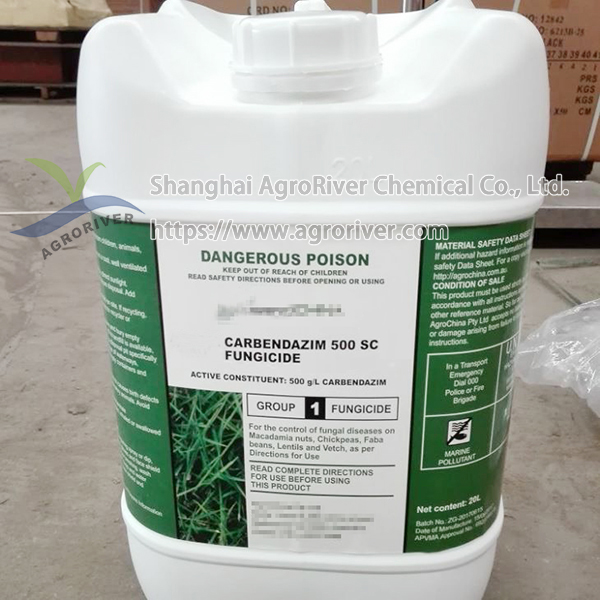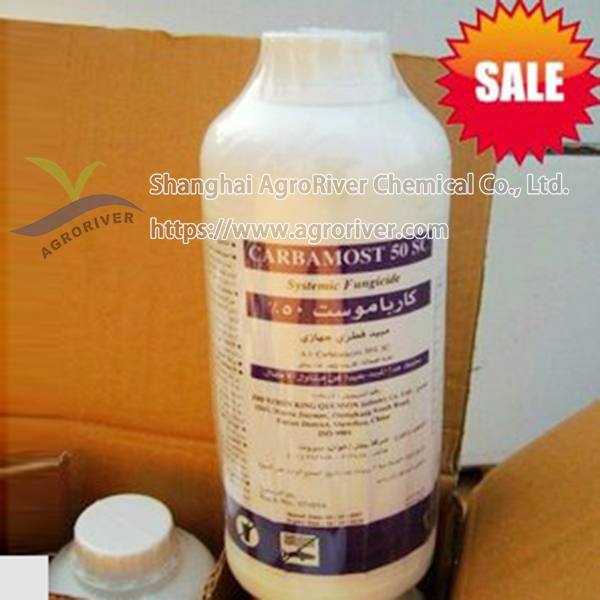Carbendazim 50%SC
Products Description
Basic Information
Common Name: Carbendazim (BSI, E-ISO); carbendazime ((f) F-ISO); carbendazol (JMAF)
CAS No.: 10605-21-7
Synonyms: agrizim;antibacmf
Molecular Formula: C9H9N3O2
Agrochemical Type: Fungicide, benzimidazole
Mode of Action: Systemic fungicide with protective and curative action. Absorbed through the roots and green tissues, with translocation acropetally. Acts by inhibiting development of the germ tubes, the formation of appressoria, and the growth of mycelia.
Formulation: Carbendazim 25%WP, 50%WP, 40%SC, 50%SC, 80%WG
The mixed formulation:
Carbendazim 64% + Tebuconazole 16% WP
Carbendazim 25% + Flusilazole 12% WP
Carbendazim 25% + Prothioconazole 3% SC
Carbendazim 5% + Mothalonil 20% WP
Carbendazim 36% + Pyraclostrobin 6% SC
Carbendazim 30% + Exaconazole 10% SC
Carbendazim 30% + Difenoconazole 10% SC
Specification:
|
ITEMS |
STANDARDS |
|
Product name |
Carbendazim 50%SC |
|
Appearance |
White flowable liquid |
|
Content |
≥50% |
|
pH |
5.0~8.5 |
| Suspensibility |
≥ 60% |
| Wettability time | ≤ 90s |
| Fineness Wet Sieve Test (through 325 mesh) | ≥ 96% |
Packing
200L drum, 20L drum, 10L drum, 5L drum, 1L bottle or according to client's requirement.


Application
Mode of action Systemic fungicide with protective and curative action. Absorbed through the roots and green tissues, with translocation acropetally. Acts by inhibiting development of the germ tubes, the formation of appressoria, and the growth of mycelia. Uses Control ofSeptoria, Fusarium, Erysiphe and Pseudocercosporella in cereals;Sclerotinia, Alternaria and Cylindrosporium in oilseed rape; Cercosporaand Erysiphe in sugar beet; Uncinula and Botrytis in grapes;Cladosporium and Botrytis in tomatoes; Venturia and Podosphaera in pome fruit and Monilia and Sclerotinia in stone fruit. Application rates vary from 120-600 g/ha, depending on crop. A seed treatment (0.6-0.8 g/kg) will control Tilletia, Ustilago, Fusarium and Septoria in cereals, and Rhizoctonia in cotton. Also shows activity against storage diseases of fruit as a dip (0.3-0.5 g/l).







